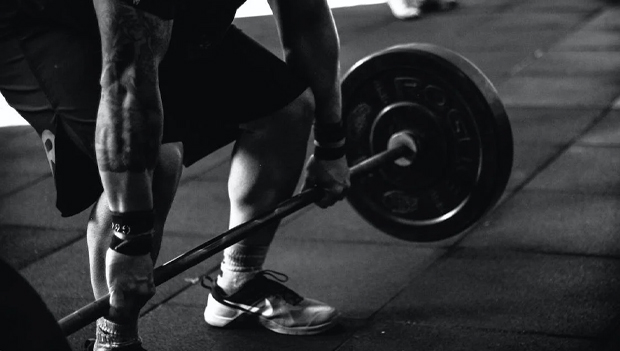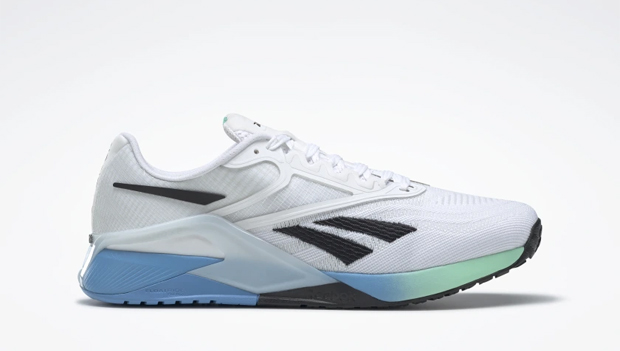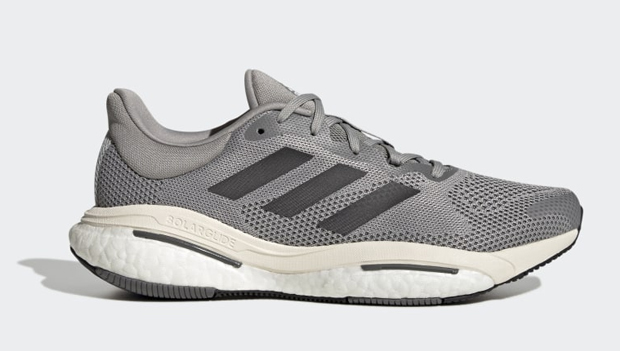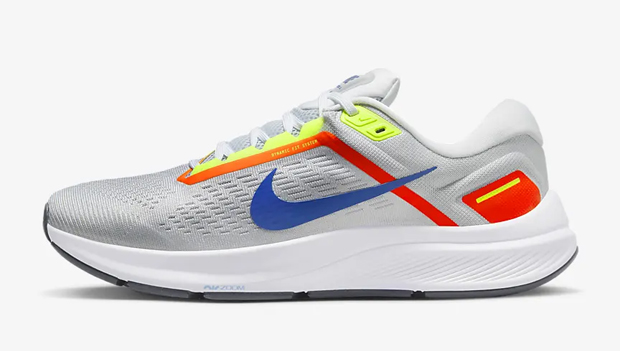
If you’re anything like me, you’d like a fresh pair of kicks for each and every activity that you participate in. However, competition from my husband for closet space and my child’s college fund each set some limitations on the growth of my shoe collection. Therefore, I try to look for dual-purpose shoes as much as possible, especially for specific occasions like running and lifting.
For shoes to be good for both running and weightlifting, they need to be like Goldilocks’s porridge—just right. For shoes, this means they need to be both versatile and durable. In this review of the best running and lifting shoes we will break down our top picks and dive into what to look for to get a secure and comfortable fit when buying shoes for both running and lifting.
Why Trust Us?
ACTIVE.com’s editorial team relies on the knowledge and experience of fitness and wellness experts including competitive athletes, coaches, physical therapists, nutritionists, and certified trainers. This helps us ensure the products we feature are of the highest standard. Collectively, the team has spent countless hours researching equipment, gear, and recovery tools in order to create the most accurate, authentic content for our readers. Customer satisfaction is also a key part of our review process, which is why we only feature products that are highly rated.
The Best Running and Lifting Shoes - Our Top Picks
By clicking on the product links in this article, we may receive a commission fee at no cost to you, the reader. Sponsorships and affiliate commissions help support our research so we can help you find the best products. Read the full affiliate disclosure here.
- Best Overall Running and Lifting Shoes: Reebok Nano X2
- Best Budget Running and Lifting Shoes: Nike Flex Experience
- Best Lightweight Running and Lifting Shoes: adidas Ultraboost 22
- Best Running and Lifting Shoes for Heavy Lifting: Nike Metcon 8
- Best Running and Lifting Shoes for Running Long Distances: adidas Solarglide 5
- Best Running and Lifting Shoes for Outdoor Workouts: Nike Zoom Structure 24
Best Overall Running and Lifting Shoes - Reebok Nano X2

SPECS
- Heel-to-toe drop: 7 mm
- Weight: Approx. 10.2 oz.
- Sizes: 6-14 (M), 5-11 (W)
- Colors: 11+ colors (M), 9+ colors (W)
When you need to seamlessly shift between running and lifting, you will want to make sure a pair of Reebok Nano X2s are in your gym bag. These hold up under a heavy barbell and are comfortable and supportive enough for most cross-training runs. Reebok married the Floatride Energy Foam midsole with a rubber outsole to provide comfort, stability, and responsiveness, which is ideal for a mixture of lifting and running.
I may give a slight nod to lifting over running for these shoes in that I would feel comfortable performing any lift at a moderate weight in these shoes, but I would not want to run long distances in them. With that being said, they are great for the shorter distances often prescribed in CrossFit and other cross-training programs. Also, for those familiar with the Reebok Nano X1 and the high heel tab that caused heel rubbing for many, this issue has been addressed and corrected in this latest iteration of the Nano.
What We Like
- Versatility
- Stability
- Comfortable midsole support
What We Don’t Like
- Fairly expensive—although Reebok often runs sales
- Outsoles may wear down quickly
BUY: Reebok Nano X2
Best Budget Running and Lifting Shoes - Nike Flex Experience

SPECS
- Heel-to-toe drop: 8 mm
- Weight: Approx. 8.2 oz.
- Sizes: 6-15 and include extra wide sizing (M), 5-12 and include wide sizing (W)
- Colors: 10 colors (M), 9 colors (W)
If you want to flex on lifting, running, and bargain hunting, these shoes are the Nike experience you need. With a unique midsole that is both rigid enough for weightlifting and flexible enough for running and jumping, the Nike Flex Experience allows you to transition between both kinds of training with ease. Additionally, these hybrid running shoes are easy enough on your wallet that you’ll be able to save your cash for other training gear.
There is a good amount of stability in the heel, and this makes them a good choice for getting below parallel on your squats. This shoe is comfortable and stays secure without being overly stiff.
What We Like
- Affordable
- Breathable
- Supportive
- Wide-widths available
What We Don’t Like
- Laces come untied easily
- Complaints of a squeaky noise
BUY: Nike Flex Experience
Best Lightweight Running and Lifting Shoes - adidas Ultraboost 22

SPECS
- Heel-to-toe drop: 10 mm
- Weight: Approx. 11.8 oz.
- Sizes: 4-15 (M), 5-12 (W)
- Colors: 30+ colors (M), 25+ colors (W)
Although this lightweight shoe may fall more on the running side of the run-lift coin, there are several features that make it a great companion for lifting, as well. The adidas Ultraboost boasts a stable midsole that keeps your foot supported during weight training sessions. Additionally, this shoe securely locks the heel in place, which not only makes for a more comfortable run, but can help support you when you’re working on squats.
This shoe feels like a cloud when you slip it on, but despite the soft cushioning, there isn’t much lean to this shoe. Additionally, the sole is fairly thick and clunky, but this shoe still provides a stable base.
What We Like
- Comfortable
- Durable
- Stable
What We Don’t Like
- Expensive
- Chunky sole can feel bulky
BUY: adidas Ultraboost 22
Best Running and Lifting Shoes for Heavy Lifting - Nike Metcon 8

SPECS
- Heel-to-toe drop: 4 mm
- Weight: Approx. 12.4 oz.
- Sizes: 3.5-22 (M), 5-12 (W)
- Colors: 8 colors + design your own option (M), 10 colors + design your own option (W)
The Nike Metcon is a tried and true CrossFit shoe. Now, in its eighth iteration, this shoe is really hitting its stride as a terrific shoe for a variety of exercise movements, although it really shines when it comes to heavy lifting. The stiffness and stability of these shoes make them an excellent choice for a variety of lifts, including back squats and deadlifts. The removable heel insert helps these shoes feel more like traditional lifters.
Although the hefty Metcon 8s wouldn’t be recommended for long endurance runs, they will hold up well during shorter stints. Further, the outsoles provide good traction that will keep you from slipping and sliding when you take off and the breathable uppers keep your feet climate controlled during the hottest of workouts.
What We Like
- Stability and durability
- Removable Hyperlift heel insert
- Breathable
- Fun colorways, very customizable
What We Don’t Like
- Pricey
- Some may find them overly stiff
- Narrow toe box
BUY: Nike Metcon 8
Best Running and Lifting Shoes for Running Long Distances - adidas Solarglide 5

SPECS
- Heel-to-toe drop: 10 mm
- Weight: Approx. 12.6 oz.
- Sizes: 6.5-15 (M), 5-12 (W)
- Colors: 5 colors (M), 9 colors (W)
For the days that you’ll be doing more running than lifting, the adidas Solar Glide 5 will help you go the extra mile. This shoe is adidas’s foray into maximum cushion runners and the boost platform will make your distance tick away.
Although this is not the shoe for powerlifting, the fairly high level of stiffness in the midsole will allow you to get in some light to moderate lifts before or after your long runs. It should be noted that this shoe does take a bit of time to break in, but if you stick with it, it will become an exemplary running buddy.
What We Like
- Stability
- Incredible cushion
- Stiff midsole—good for lifting
What We Don’t Like
- Heavy
- Long break-in period
BUY: adidas Solarglide 5
Best Running and Lifting Shoes for Outdoor Workouts - Nike Zoom Structure 24

SPECS
- Heel-to-toe drop: 8 mm
- Weight: Approx. 11 oz.
- Sizes: 6-15 (M), 5-12 (W)
- Colors: 10 colors (M), 4 colors (W)
Even the most hardened gym rats need a dose of vitamin D from time to time. When it is time to take your workout outdoors, you’ll want to take the Nike Zoom Structure 24 with you. These shoes have a wide, cushioned, and stable midsole. Additionally, a standout feature that makes this shoe great for running and lifting is how the shoe is cupped at the midsole to provide increased support for lifting.
Nike has added a compressed Zoom Air bag in the forefoot that makes zipping around trails and city parks comfortable, while the outsole’s geometric pattern provides traction for whatever the terrain throws at you.
What We Like
- Great traction
- Comfortable forefoot
- Durable
- Cupped midsole for lifting support
What We Don’t Like
- Fairly heavy
- Not as nimble on turns and pivots
- Limited color options
What To Look For in Running and Lifting Shoes
When you’re ready to purchase a pair of shoes that you can use for both running and lifting, there are few factors that you should consider. Check out the following before plunking down your hard-earned plastic.
Durability
You will be asking a lot from shoes that will support both the pounding of running and the force of lifting. Therefore, you will want to make sure that the uppers are made of solid, but breathable material that will be able to withstand a large range of motion. Likewise, the soles of these shoes will be called upon to be both flexible enough for sprints and rigid enough for deadlifts. Shoes that can be worn for both running and lifting will need some amount of cushioning, but it shouldn’t be excessive. There should be a good balance of cushioning and stiffness that allows you to do both activities efficiently. Some durable materials that you should look for are rubber, EVA foam, and thermoplastic polyurethane (TPU).
Versatility
Running and lifting are two very fairly different exercise genres. Therefore, when you are performing them wearing the same shoe, you will want to make sure that your kicks are versatile enough to handle both. You will want to look for shoes that are rigid enough to provide stability for heavy lifting, but flexible enough that they will not alter your running stride too much. The heel drop will also want to be in between what it would be for an optimal running shoe and a prime-time lifter. This will generally be around a four millimeter heel-to-toe drop.
Anatomy of Your Feet
Some of us have wide, flat feet, while others have skinny ones with high arches. Depending on the particulars of your kickers, you will want to consider the types of arches and the width of your shoes. Conversely, if you need additional ankle support due to mobility issues, a shoe with a heel raise will allow you to squat to proper depth, but also won’t cause discomfort when running.
FAQs About Running and Lifting Shoes
Can you use running shoes for lifting?
While you can certainly lift in running shoes if you must, it is not optimal. Lifting shoes have flatter, more stable soles. Lifters and cross-training shoes need to provide a secure base.
Is running and lifting a good combo?
The combination of running and lifting is an excellent way to improve your health and fitness. This is because you will improve your strength as well as your cardiovascular endurance when you both lift and run.
Is it OK to squat in running shoes?
Squatting in running shoes is OK. However, due to the design of running shoes, they may cause you to place more weight in your toes than you should for proper squat form. So, while it is OK, it may not be optimal.


